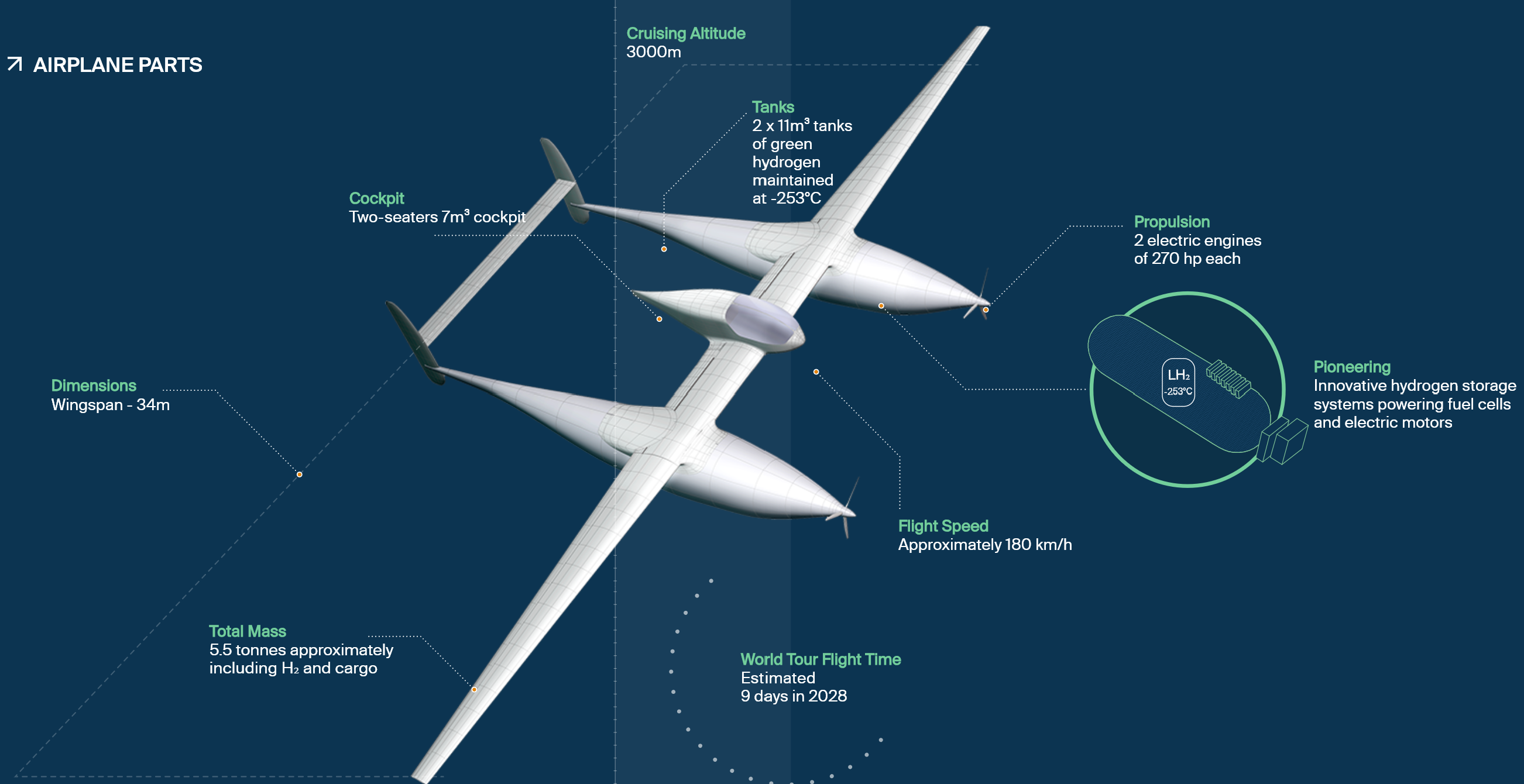New Chapter in Sustainable Aviation
Remember Solar Impulse 2 (Si2)? Nearly a decade ago, this groundbreaking aircraft completed a historic circumnavigation of the globe, powered entirely by solar energy. It wasn’t just an aviation milestone—it was a global statement on the potential of electric flight and renewable energy.
With a 72-meter wingspan, larger than a Boeing 747, and an impressive lift-to-drag ratio (L/D) of 37:1, Solar Impulse 2 flew at an average speed of 43 miles per hour, relying on solar panels and onboard batteries that allowed it to fly through the night.
Now, the visionary behind Solar Impulse, Bertrand Piccard, has teamed up with Raphaël Dinelli, known for the solar-powered biplane Eraole, to push the boundaries even further.
Introducing Climate Impulse: Hydrogen-Powered Flight Around the World
Their ambitious new project is called Climate Impulse—a hydrogen-powered aircraft designed to fly nonstop around the globe. Scheduled for its first flight in 2028, Climate Impulse’s mission is to prove that aviation can be decarbonized using today’s technology.
Here’s what makes Climate Impulse revolutionary:
Key Aircraft Specs:
- Wingspan: 34 meters
- Engines: Two 270-horsepower electric motors, powered by hydrogen fuel cells
- Cruise Speed: 180 kilometers per hour (approx. 112 mph)
- Altitude: Around 10,000 feet (3,000 meters), suitable for hydrogen management and unpressurized flight
- Total Takeoff Weight: About 5.5 tonnes
- Hydrogen Storage: Two 11 cubic meter cryogenic tanks, storing liquid hydrogen at -253°C
- Cockpit Volume: Just 7 cubic meters, designed for two pilots for a multi-day endurance flight
Design Inspiration: The Voyager Connection
Climate Impulse draws clear inspiration from the legendary Burt Rutan Model 76 Voyager, which, in 1986, became the first aircraft to fly around the world without stopping or refueling.
Voyager vs. Climate Impulse – Quick Comparison:
| Feature | Burt Rutan Voyager | Climate Impulse |
|---|---|---|
| Wingspan | 34 meters | 34 meters |
| Cruise Speed | 116 mph (187 km/h) | 112 mph (180 km/h) |
| Altitude | ~11,000 feet | ~10,000 feet |
| Engine Configuration | Push-pull piston engines | Twin electric engines |
| Fuel | Fossil fuel (77% of takeoff weight) | Liquid hydrogen |
| Cabin Volume | 2.06 m³ (unpressurized) | 7 m³ (unpressurized) |
While Voyager relied on fossil fuels and ingenious aerodynamics, Climate Impulse aims to demonstrate zero-emissions, hydrogen-powered flight for long-duration missions.
Overcoming Technical Challenges
Storing and managing liquid hydrogen at cryogenic temperatures poses one of the most demanding engineering challenges for Climate Impulse.
To succeed, the aircraft will need to achieve an L/D ratio above 20, ensure hydrogen remains in liquid form throughout the mission, and maintain pilot endurance in a cramped, unpressurized cabin for multiple days.
Why Climate Impulse Matters for the Future of Aviation
While companies like H2Fly and Joby Aviation have successfully demonstrated short-range hydrogen-electric flights, Climate Impulse will be the first to sustain such a flight for several consecutive days.
Just as Voyager inspired a generation of experimental aircraft (including SpaceShipOne), Climate Impulse could mark the beginning of a new era in zero-emission aviation.
Whether this mission transforms the way we fly remains to be seen—but its potential for sustainable, long-range, hydrogen-powered flight is undeniable.
